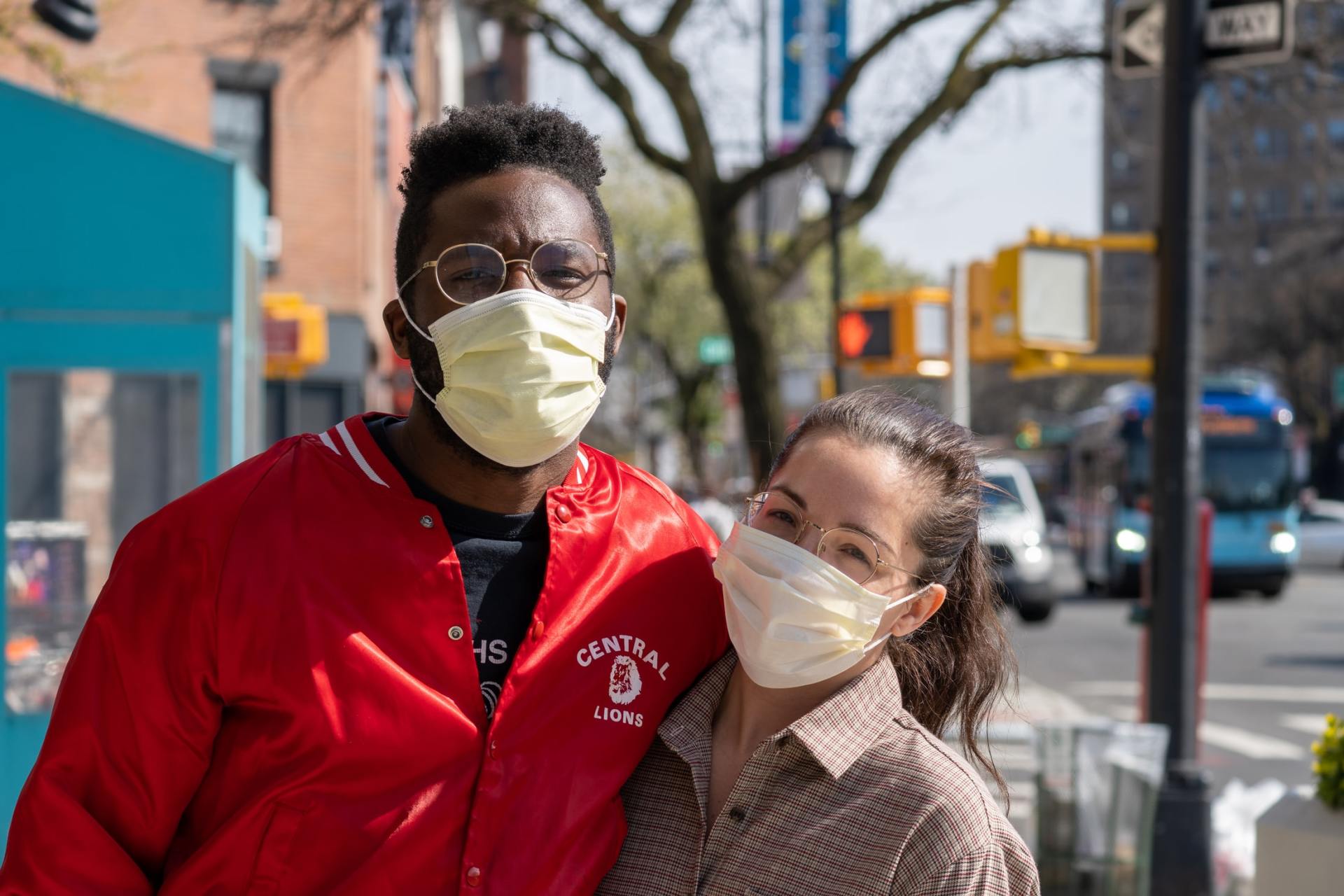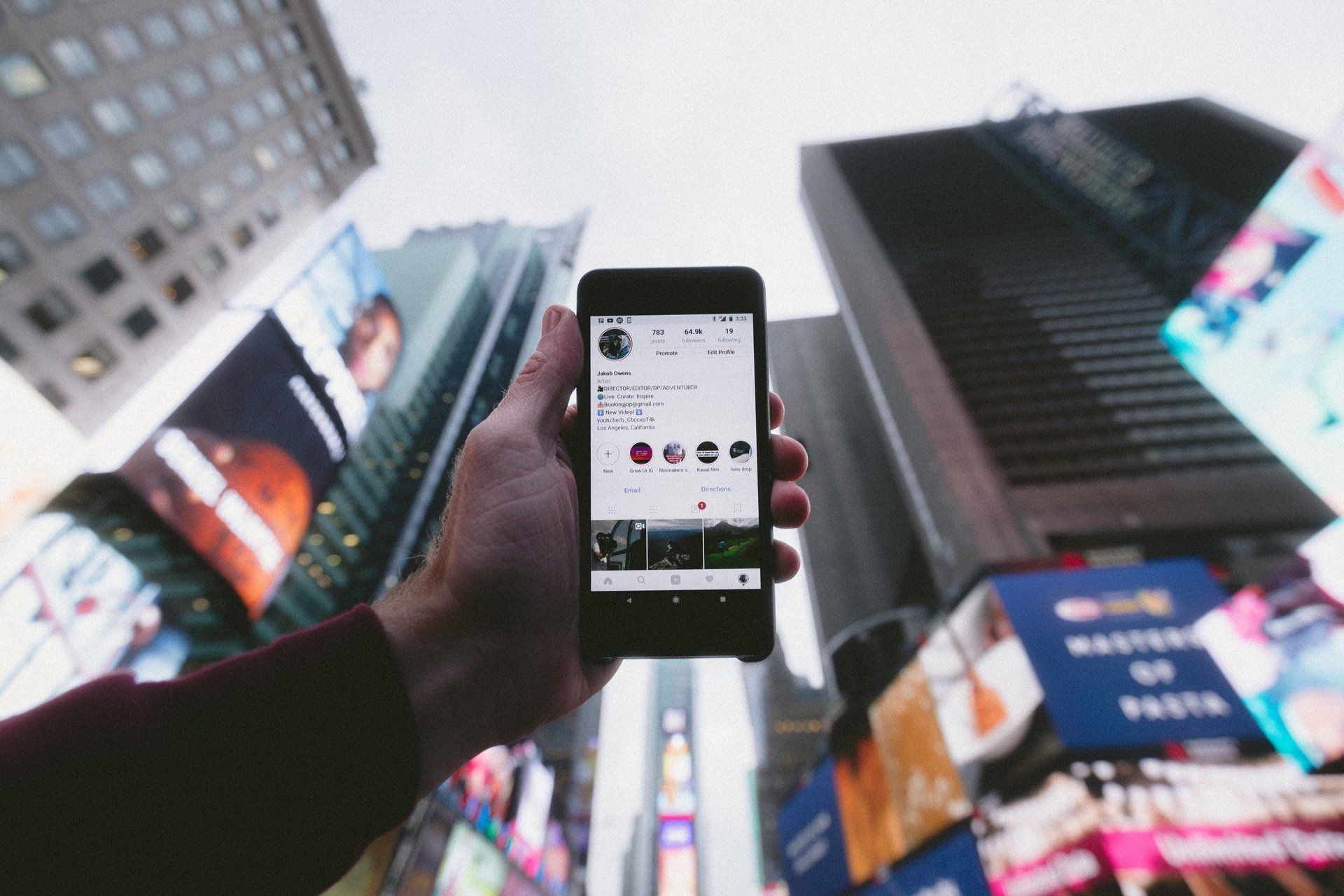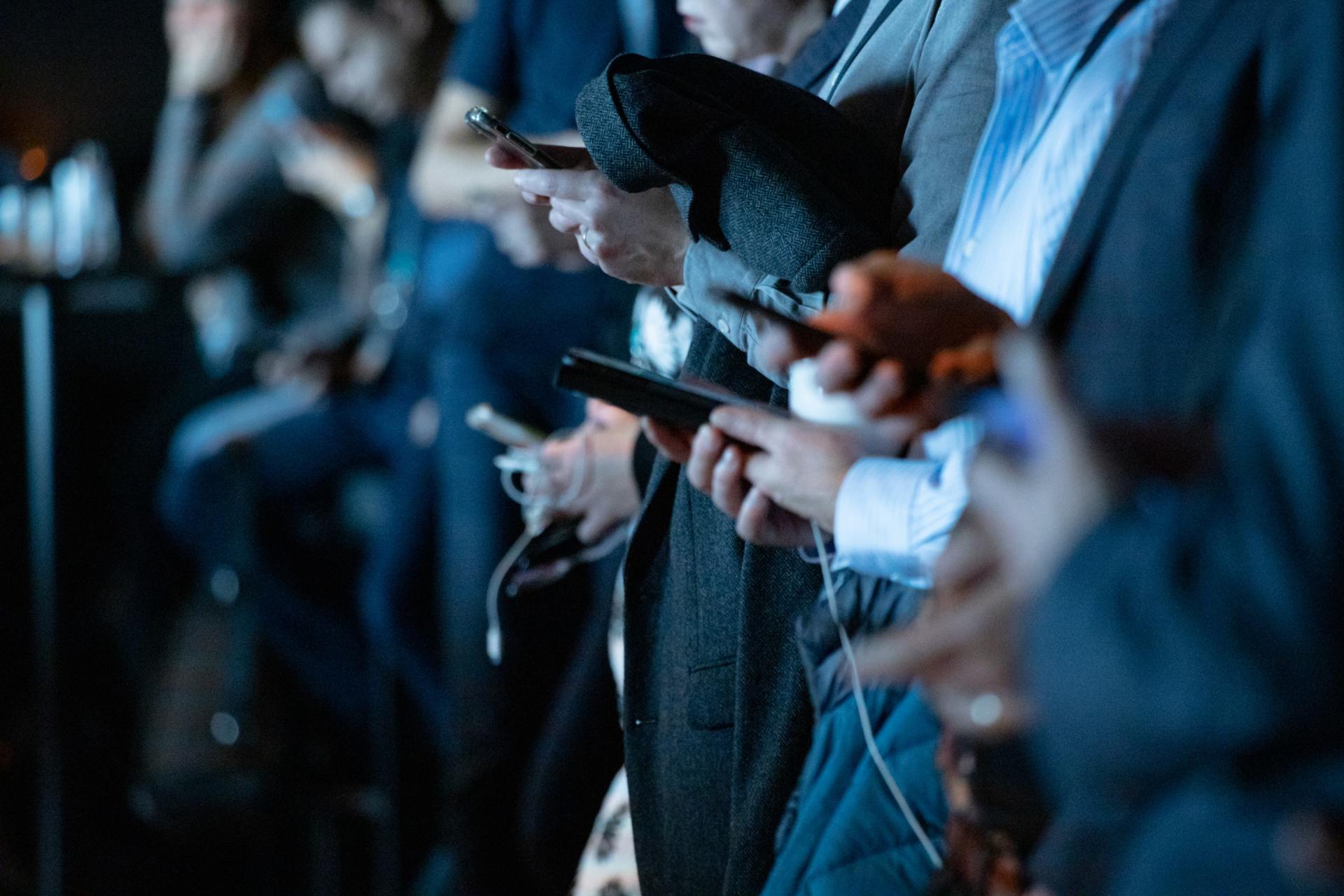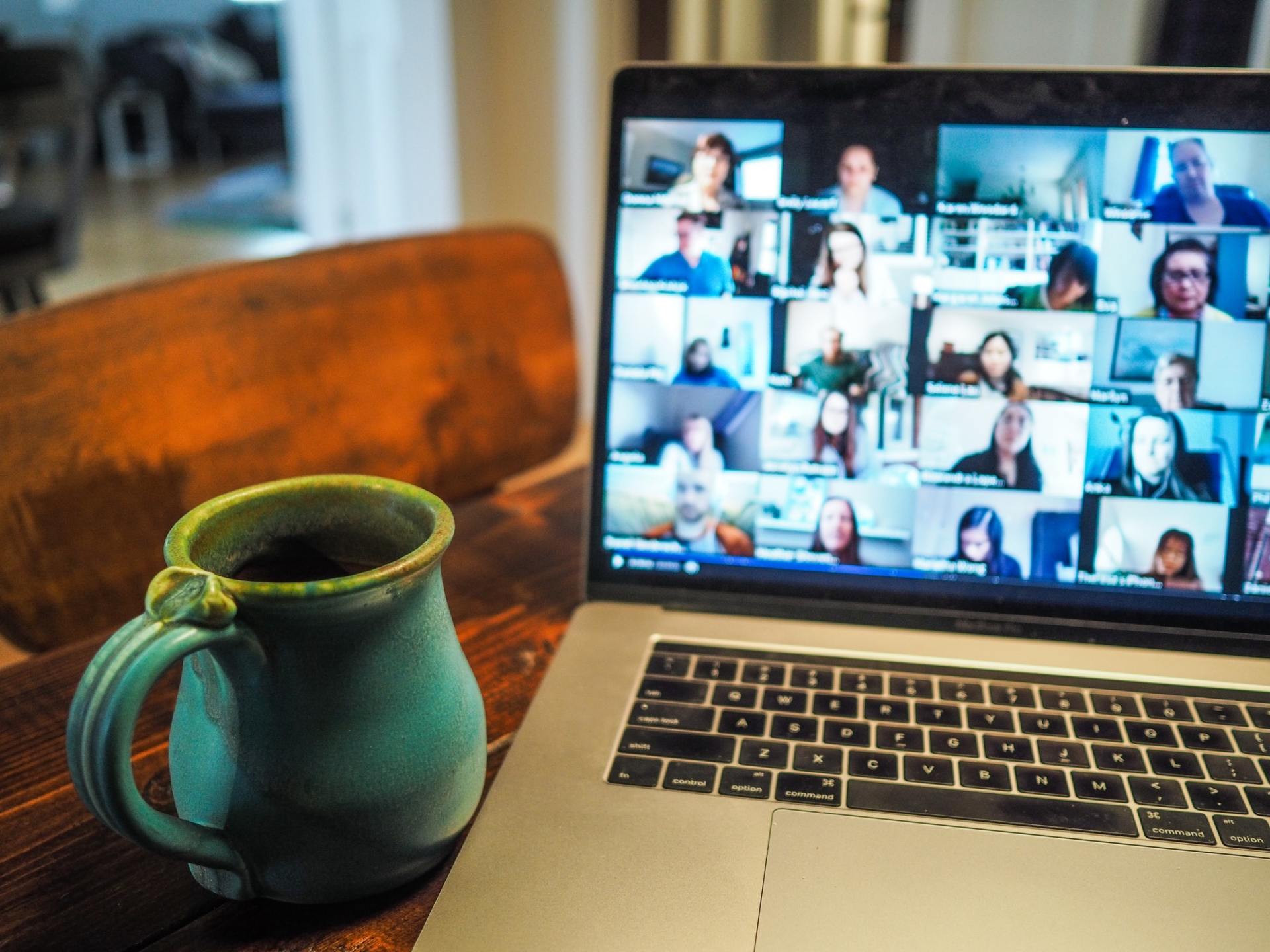MaxxMyBrand Industry News

Today, more than any other time in recent history, social media platforms have become the main source of information surpassing print and other digital media platforms. Further the current situation (COVID-19) has acted as a catalyst to the ever-increasing rise in social media adoption. More and more people are relying on Twitter, Facebook, and Instagram to stay up-to-date. As businesses all over the world grapple with dropping profits and staff well being, marketing via social media will be key. Why? Because with social distancing and restricted movement, more consumers are now shopping online. To survive this crisis, your business needs to maintain its customer base. Having an engaging presence on LinkedIn, Twitter, Facebook, LinkedIn or other social media platforms will help you connect your customers and build relationships. The Key Role of Social Media Marketing Social media has become an indispensable component in our daily life. Home-bound with little to do — Covid-19 has led to a spike in online media consumption. The businesses that will survive these uncertain times and continue to thrive afterward are those that remain agile. As such, your business will need to respond fast and effectively to the unique challenges presented. This period presents a rare and unique opportunity to use social media marketing at its best; to connect and bond with customers in meaningful ways. Customers are looking to engage with brands that do more than just sell. In this regard, community support is crucial. Practical support such as providing food or sanitizing equipment to those in need will render a human face to your business. Undeniably, social media marketing also provides you with a platform to brand, sell, and market your products and services. But, this should not be the end-all-be-all for social media. How Should Business Owners Adopt Their Social Media Marketing Strategies Post-COVID-19? Business owners ought to relate their social media marketing to the ongoing situation. As much as customers don’t want to get reminded about the pandemic wherever they look, brands that ignore the situation seem misplaced. Having said that, trying to leverage COVID-19 for brand building purposes in your social media posts can be a put-off. More than ever before, business owners need to craft communication strategies that help them connect with their customers. For example, use social media to deliver helpful messages and engage in valuable conversations with your audience. This can be through providing helpful information, advice, or sharing light-hearted social media posts. This will help you resonate well with your customers and allow you to come out of the crisis much stronger. The increase in social media usage is bound to continue long after lockdown restrictions are lifted. It will remain key in determining how businesses engage with their customers going forward. How to Enhance Your Brand Presence With Social Media Marketing Since your social media marketing strategy is becoming increasingly important, the following tips will help you maintain your brand presence in the era of COVID-19 and thereafter. Remember, you need to lay the groundwork now. Hopefully, you are not planning to scramble up a plan once the world settles into a new normal. It’s not going to be business as usual. Not anymore. So, here’s how to help your business maintain its momentum post COVID-19: Enhance Your Online Visibility When used well, social media is a powerful tool. You can use it to raise your brand awareness, generate leads, determine how the market feels about you, and much more. This begs the question, how effective is your online presence? Are you using the right channels to engage with your customers? What are your goals? The thing is, whatever your business goals, you need a well-crafted social media marketing plan. This will help you attract, engage, and retain your target audience. Therefore, ensure that your website, social sites, and content align with your brand image and resonate with your audience. Connect Emotionally With Your Customers Always create an emotional connection with your customers. Invite and encourage them to interact with your brand. Inspire them to follow you through the crisis by sharing interactive posts on Instagram, Twitter, or Facebook. Let your customers become a part of your brand story by involving them in crafting solutions to their challenges. Share behind the scene video footage of activities your business is engaged in as it responds to the crisis. Businesses that are engaging with their customers and fans at present will remain top of mind. They will be remembered when the markets turn around. How are you helping? Don’t Be Opportunistic Normal daily routines have changed overnight and work has shifted online. Social media has thus become a critical connection tool. As a business, this is neither the time nor the place to engage in online self-promoting activities. This would be very distasteful. Instead, use this as an opportunity to help your customers. In one word, be present. Of course, it’s important to push your brand’s product and services. That’s why you are in business after all. But, you can remain relevant — and make money — while offering value to your customers. Now that’s a win-win by any standards. Be Consistent Have clear guidelines on the type of messaging you want to convey and the results you want from your social media activities. Note that your audience is watching with keen interest the stance your business is taking and how it responds in these unprecedented times. One thing’s for sure; the behavior of your audience will keep changing over the next few months. Your brand needs to be consistent in reviewing and re-strategizing its social media marketing strategy — as individuals adjust to #new normal and new challenges arise. Remember that consistency builds trust and customers value consistency. Be Proactive Become proactive in anticipating the future. Businesses that fail to do this risk falling behind or losing themselves in the crisis. Consumers are looking for comfort, genuine connections, and reassurance. Be the business that delivers on time, offers a note of thanks, smart tips on working remotely, or an uplifting quote. This will go a long way in securing and maintaining your customer base long after the crisis ends. Some Brilliant Social Media Marketing Examples Many businesses have provided their customers with free resources to help them cope with the crisis. Others have offered free online content to support students with distance learning or videos on how to keep fit in the confines of your home. Wondering what to cook for dinner? Hop online for a free cooking class or order a gourmet meal from the nearest restaurant. Bored? Stream a free online concert. The options are unlimited. On the whole, many brands are doing their best to ease the fear, stress, and discomfort that many people are experiencing. They have tried to be useful — not just entertaining — to consumers stuck at home. Let’s have a look at some brands that have gotten social media marketing right during COVID-19: Silverado Resort and Spa: Immunity Boosting Plants Most hotels are reporting up to a 50% drop in revenues due to canceled bookings owing to travel restrictions. Still, this hotel has chosen to educate its customers on how to boost their immunity using plants. It has altered its digital content strategy to focus on wellness and added a human element in their messaging. It will endear itself to its customers by helping them keep positive during a trying time. Ikea: Reconnecting with Your home During Quarantine What do you do when you are stuck at home and have watched reruns of Money Heist for the umpteenth time? Ikea has the answer — reconnect with your home. The company has encouraged its customers to keep safe — by staying at home — and find comfort within the home. Nike: Just Do It — Stay Home Nike put it plain and simple. The message is inspiring, hopeful, and it drives the message home. Finally, this is how not to do it: Corona Hard Seltzer: Launched on February 24, 2020 Enough Said. Note that brands that opt to keep quiet and do nothing may suffer reputational damage once curfew is lifted. This is the time to up the ante in your social media marketing. Be visible. Be heard. Your loyal customers will keep your business thriving well beyond the end of the pandemic. And once the corona recession is over, they will reward you. But, if you leave the field open to your competition, guess what you’ll wake up to after social distancing is over? You guessed it; reduced market share. Final Thoughts So, as we stay connected while we remain physically separated, this truth remains. Businesses can leverage the undisputed power of social media to post business updates and support both staff and customers like never before. This being the first time the world has experienced a pandemic of this scale, the role of social media marketing will continue unfolding. In hindsight, future businesses will learn how they too can respond to such an unprecedented global health pandemic. While COVID-19 presents a defining moment for businesses to market their services, it’s essential to use responsible social media marketing practices. Nevertheless, stay on top of your game as you seize the most opportune moments for success; one tweet at a time. This content was originally published here .

Today, more than any other time in recent history, social media platforms have become the main source of information surpassing print and other digital media platforms. Further the current situation (COVID-19) has acted as a catalyst to the ever-increasing rise in social media adoption. More and more people are relying on Twitter, Facebook, and Instagram to stay up-to-date. As businesses world over grapple with dropping profits and staff well being, marketing via social media will be key. Why? Because with social distancing and restricted movement, more consumers are now shopping online. To survive this crisis, your business needs to maintain its customer base. Having an engaging presence on LinkedIn, Twitter, Facebook, LinkedIn or other social media platforms will help you connect your customers and build relationships. The Key Role of Social Media Marketing Social media has become an indispensable component in our daily life. Home-bound with little to do — Covid-19 has led to a spike in online media consumption. The businesses that will survive these uncertain times and continue to thrive afterward are those that remain agile. As such, your business will need to respond fast and effectively to the unique challenges presented. This period presents a rare and unique opportunity to use social media marketing at its best; to connect and bond with customers in meaningful ways. Customers are looking to engage with brands that do more than just sell. In this regard, community support is crucial. Practical support such as providing food or sanitizing equipment to those in need will render a human face to your business. Undeniably, social media marketing also provides you with a platform to brand, sell, and market your products and services. But, this should not be the end-all-be-all for social media. How Should Business Owners Adopt Their Social Media Marketing Strategies Post COVID-19? Business owners ought to relate their social media marketing to the ongoing situation. As much as customers don’t want to get reminded about the pandemic wherever they look, brands that ignore the situation seem misplaced. Having said that, trying to leverage COVID-19 for brand building purposes in your social media posts can be a put-off. More than ever before, business owners need to craft communication strategies that help them connect with their customers. For example, use social media to deliver helpful messages and engage in valuable conversations with your audience. This can be through providing helpful information, advice, or sharing light-hearted social media posts. This will help you resonate well with your customers and allow you to come out of the crisis much stronger. The increase in social media usage is bound to continue long after lockdown restrictions are lifted. It will remain key in determining how businesses engage with their customers going forward. How to Enhance Your Brand Presence With Social Media Marketing Since your social media marketing strategy is becoming increasingly important, the following tips will help you maintain your brand presence in the era of COVID-19 and thereafter. Remember, you need to lay the groundwork now. Hopefully, you are not planning to scramble up a plan once the world settles into a new normal. It’s not going to be business as usual. Not anymore. So, here’s how to help your business maintain its momentum post COVID-19: Enhance Your Online Visibility When used well, social media is a powerful tool. You can use it to raise your brand awareness, generate leads, determine how the market feels about you, and much more. This begs the question, how effective is your online presence? Are you using the right channels to engage with your customers? What are your goals? The thing is, whatever your business goals, you need a well-crafted social media marketing plan. This will help you attract, engage, and retain your target audience. Therefore, ensure that your website, social sites, and content align with your brand image and resonate with your audience. Connect Emotionally With Your Customers Always create an emotional connection with your customers. Invite and encourage them to interact with your brand. Inspire them to follow you through the crisis by sharing interactive posts on Instagram, Twitter, or Facebook. Let your customers become a part of your brand story by involving them in crafting solutions to their challenges. Share behind the scene video footage of activities your business is engaged in as it responds to the crisis. Businesses that are engaging with their customers and fans at present will remain top of mind. They will be remembered when the markets turn around. How are you helping? Don’t be Opportunistic Normal daily routines have changed overnight and work has shifted online. Social media has thus become a critical connection tool. As a business, this is neither the time nor the place to engage in online self-promoting activities. This would be very distasteful. Instead, use this as an opportunity to help your customers. In one word, be present. Of course, it’s important to push your brand’s product and services. That’s why you are in business after all. But, you can remain relevant — and make money — while offering value to your customers. Now that’s a win-win by any standards. Be Consistent Have clear guidelines on the type of messaging you want to convey and the results you want from your social media activities. Note that your audience is watching with keen interest the stance your business is taking and how it responds in these unprecedented times. One thing’s for sure; the behavior of your audience will keep changing over the next few months. Your brand needs to be consistent in reviewing and re-strategizing its social media marketing strategy — as individuals adjust to #new normal and new challenges arise. Remember that consistency builds trust and customers value consistency. Be Proactive Become proactive in anticipating the future. Businesses that fail to do this risk falling behind or losing themselves in the crisis. Consumers are looking for comfort, genuine connections, and reassurance. Be the business that delivers on time, offers a note of thanks, smart tips on working remotely, or an uplifting quote. This will go a long way in securing and maintaining your customer base long after the crisis ends. Some Brilliant Social Media Marketing Examples Many businesses have provided their customers with free resources to help them cope with the crisis. Others have offered free online content to support students with distance learning or videos on how to keep fit in the confines of your home. Wondering what to cook for dinner? Hop online for a free cooking class or order a gourmet meal from the nearest restaurant. Bored? Stream a free online concert. The options are unlimited. On the whole, many brands are doing their best to ease the fear, stress, and discomfort that many people are experiencing. They have tried to be useful — not just entertaining — to consumers stuck at home. Let’s have a look at some brands that have gotten social media marketing right during COVID-19: Silverado Resort and Spa: Immunity Boosting Plants Most hotels are reporting up to a 50% drop in revenues due to canceled bookings owing to travel restrictions. Still, this hotel has chosen to educate its customers on how to boost their immunity using plants. It has altered its digital content strategy to focus on wellness and added a human element in their messaging. It will endear itself to its customers by helping them keep positive during a trying time. Ikea: Reconnecting with Your home During Quarantine What do you do when you are stuck at home and have watched reruns of Money Heist for the umpteenth time? Ikea has the answer — reconnect with your home. The company has encouraged its customers to keep safe — by staying at home — and find comfort within the home. Nike: Just Do It — Stay Home Nike put it plain and simple. The message is inspiring, hopeful, and it drives the message home. Finally, this is how not to do it: Corona Hard Seltzer: Launched on February 24, 2020 Enough Said. Note that brands that opt to keep quiet and do nothing may suffer reputational damage once curfew is lifted. This is the time to up the ante in your social media marketing. Be visible. Be heard. Your loyal customers will keep your business thriving well beyond the end of the pandemic. And once the corona recession is over, they will reward you. But, if you leave the field open to your competition, guess what you’ll wake up to after social distancing is over? You guessed it; reduced market share. Final Thoughts So, as we stay connected while we remain physically separated, this truth remains. Businesses can leverage the undisputed power of social media to post business updates and support both staff and customers like never before. This being the first time the world has experienced a pandemic of this scale, the role of social media marketing will continue unfolding. In hindsight, future businesses will learn how they too can respond to such an unprecedented global health pandemic. While COVID-19 presents a defining moment for businesses to market their services, it’s essential to use responsible social media marketing practices. Nevertheless, stay on top of your game as you seize the most opportune moments for success; one tweet at a time. This content was originally published here .

The best social media campaigns all have one thing in common: They engage people and make them talk. Social media can be used to inspire, enrage, amuse, and sell loads of stuff. Even in what has basically become a pay-to-play channel, marketers continue to find creative ways to increase their visibility and reach, while simultaneously conveying their brand’s message. You can measure the buzz around a social media campaign with a social listening tool. It becomes easy to see how many people are talking about your campaign, and what they think about it. So which brands are successfully tapping into the desires and needs of their target audience on social media? This post puts together 15 outstanding examples of social media campaigns you need to see. Some are fun, some are inventive, some promote worthy causes, but all of them do an awesome job of helping the company’s bottom line. 1. Gillette’s ‘The Best Men Can Be’ In January 2019, Gillette launched a social media campaign aiming at a modern interpretation of manhood. The short film posted exclusively on YouTube depicted several cases of men struggling with traditional masculinity that Gillette itself used to glorify: the fear to show their emotions, sexual harassment, bullying others. Then the film shows several examples of positive masculinity, such as standing up for others, caring for your loved ones, and so on. The campaign was clearly inspired by the #MeToo movement. On their Instagram, the company also posted positive male role models with short stories about their journey in the world: In addition to that, the company promised to donate “$1 million per year for the next three years to non-profit organizations executing the most interesting and impactful programs designed to help men of all ages achieve their personal best.” The Numbers Why Did It Work? This campaign managed to tap into an extremely relevant and widely discussed issue. It juxtaposed the previous branding of Gillette with a new one and showed the willingness to change. At the same time, it was also quite controversial – some people didn’t agree with how the short film portrayed men and thought that it was offensive. They even started a #boycottgillette hashtag, however, it only took up around 3.5% of all the conversations around the campaign on social media. THIS is how you use your brand. THIS is how you engage with your audience. Gillette being aware of mostly having a male audience and using their influence as a global brand to make a change for the better. other companies take notes pic.twitter.com/KCdxKDLji0 Greggs is a British bakery chain loved by the Brits. In January, they introduced their new vegan sausage roll, with a clever video ad parodying Apple ads. However, it’s not the ad itself but the events that followed that made the campaign so memorable. Piers Morgan, a controversial public figure, retweeted Greggs’ announcement and expressed irritation at the existence of a vegan sausage roll. That made both pro-vegan roll and anti-vegan roll British people join the social media battle of the year! Greggs responded to Piers Morgan along with 9,000+ other Twitter users. And they didn’t shy away from responding both to sausage roll lovers and haters with witty remarks. Nobody was waiting for a vegan bloody sausage, you PC-ravaged clowns. https://t.co/QEiqG9qx2G As a result, the vegan sausage roll became one of the most popular Greggs products that year. The Numbers Why Did It Work? Even though the success of the campaign partly happened because of an organic retweet and not an action planned by Greggs, it once again shows us the power of influencer marketing. Even a negative opinion expressed by an influencer draws an incredible amount of attention to your brand. Plus, if it’s an influencer that most people hate, you only win as a result of this retweet. Another lesson to take away from this campaign is the advantages of being witty on social media. Greggs’ funny responses to haters are what won over a new audience and it’s a good practice to not take yourself too seriously on social media. 3. Spotify’s #yearwrapped At the end of last year, Spotify launched a campaign where its users could see the most important musical highlights on their website. The special webpage Spotify Wrapped showed you your most listened to artists, genres, songs, and other fun data discoveries. You could even see how the music you listened to coincided with your life events that year. Once you went through all the data analysis, Spotify suggested you share these highlights on social media, specifically Twitter and Insta Stories, and tag your favorite artist of the year. The Numbers Why Did It Work? Spotify combined two big psychological triggers in this campaign: personalization and FOMO. The reason I have Spotify over apple music #yearwrapped https://t.co/yQWTXyb0XP — pancakee is tweeting (@nalaatweets) May 4, 2020 Firstly, the app provided a personalized story for each user – you could see how your music taste developed through the year and what songs accompanied you in your life. Secondly, by enabling and encouraging sharing on social media, Spotify amplified the reach of the campaign. People naturally wanted to show off their highlights to their friends, thus making more people eager to try this experience. 4. Planters’ The Death of Mr. Peanut – #RIPPeanut It is with heavy hearts that we confirm that Mr. Peanut has died at 104. In the ultimate selfless act, he sacrificed himself to save his friends when they needed him most. Please pay your respects with #RIPeanut pic.twitter.com/VFnEFod4Zp — Peanut Jr. (@MrPeanut) January 22, 2020 Perhaps one of the most bizarre social media campaigns: the beloved mascot of Planters snack food company died at the beginning of January. His death was announced with a tweet and later explained in a video ad posted to YouTube. Apparently, Mr. Peanut sacrificed his life to save his commercial co-stars, Matt Walsh and Wesley Snipes. You could win some snacks by replying to a tweet with a #RIPPeanut hashtag. The brands and regular social media users alike played along with the campaign and it even got a mention on SNL. Goodbye, Mr. Peanut. Very few people understand how delicious our relationship has been: https://t.co/0BP3h2j5mr #RIPeanut pic.twitter.com/q6QxXJfArX The campaign was inspired by the reaction to celebrity deaths on social media. It aimed to repeat the same level of engagement that Tony Stark’s death caused in “Avengers: Endgame”. Later Mr. Peanut was reborn as a Baby Nut and now happily tweets from the Peanut Jr. account. The Numbers Why Did It Work? still can't comprehend that this really happened at an ad agency in the last few weeks pic.twitter.com/hX5UNbjVb0 — rob trench (@robtrench) January 27, 2020 The premise of the campaign was so crazy that it immediately became a meme. Many comedians and funny Twitter personalities “were making jokes about Mr. Peanut’s departure. This was a specific brand of Internet humor that makes certain things go viral – and it worked. 5. Starbucks UK’s #WhatsYourName When: 2019 Campaign Outline Starbucks UK partnered with Mermaids, an organization to support transgender and gender-diverse youth for a #WhatsYourName campaign focused on trans rights. The campaign builds on a well-known aspect of the Starbucks experience – having your name written on the side of your cup – by committing to respect the names that customers want to be called by. In addition to that, Starbucks started selling a mermaid tail cookie to raise funds for Mermaids. Social media users were encouraged to use the hashtag on Instagram to tell about their experience with gender. The Numbers Why Did It Work? The team behind the campaign created a simple, clear campaign hashtag. And they led with their values, which helped this campaign make a real, emotional impact. Many brands steer away from politicized topics, but ultimately, your employees and customers want you to take a stand. Specifically, they want companies to lead on issues of diversity and community. 6. WWF’s #EndangeredEmoji Seventeen of the animals included in the emoji index were identified as representative of endangered species. WWF used this insight to launch a campaign to raise donations for species protection. The idea was simple but effective: for each retweet of an animal emoji shared by the @WWF Twitter account, users were encouraged to make a donation of 10 cents. Every retweet of an animal emoji was tracked and at the end of each month, users were given a summary of their activity, along with what their donation equivalent totaled. This timely campaign launched for Endangered Species Day (May 19), which helped to add an element of urgency. The Numbers Why Did It Work? WWF made it easy to get involved with the campaign and effectively tapped into the emoji craze. It was fun, the suggested donation was minimal, and the use of emoji tied directly to the campaign’s purpose, rather than feeling like a forced attempt to hijack a trend. It also didn’t hurt that celebrities including Richard Branson and Jared Leto got involved. Plus, the WWF campaign earned media coverage from big outlets including the Huffington Post and The Guardian. 7. ‘Ex Machina’ A fake Tinder profile was created for SXSW 2015 to attract some publicity for the sci-fi thriller “Ex Machina”. The profile featured pictures of Alicia Vikander, the Swedish actress who plays a bot named Ava in the movie. This impressively deceptive stunt lured people into a conversation with “Ava”, before sending them to an Instagram profile that contained only trailers for the movie. We can only imagine their disappointment. The Numbers It’s difficult to pin down exactly how many people fell for this ruse, or just how much a fake Tinder profile contributed to the movie’s ultimate success. In this instance, we can really admire the inventiveness of a great publicity stunt. Why Did It Work? Once more, we see the importance of a close tie between the campaign’s content and its purpose. This campaign seems a logical extension of Ava’s character in the movie, which is perhaps why people were willing to forgive what could otherwise have been seen as a cruel prank. It was also in the ideal location – SXSW is attended by a large audience of 20-something, tech-loving men. 8. BuzzFeed’s Tasty You’ve probably seen these quick and easy recipe videos popping up all over your Facebook news feed. BuzzFeed’s Tasty videos are essentially cooking shows for the social media generation. These videos, typically lasting less than 2 minutes, deliver on-trend recipes to a highly engaged audience. The Numbers Why Did It Work? For starters, there’s the content. “It taps into a simple truth: People love tasty foods and the kind of foods that remind them of their childhood, comfort food, or food that reminds them of an experience,” according to Frank Cooper, BuzzFeed’s chief marketing officer. But more importantly, Tasty and Proper Tasty have exploded on Facebook because the content is tailor-made for that platform. The videos are optimized for Facebook’s autoplay feature, which starts playing videos without the sound on. You don’t need sound to see, for example, a 45-second guide to making a cheese-stuffed pizza pretzel. Within 24 hours, that video had 37 million views, 650,000 likes, and 750,000 shares. (It’s now up to 50 million views.) 9. Worldwide Breast Cancer’s #KnowYourLemons The charity Worldwide Breast Cancer launched an innovative and highly shareable campaign in 2017. Labeled #KnowYourLemons, the campaign was designed to promote awareness of the various signs of breast cancer and remind women that lumps are not the only symptom. Using lemons to depict 12 different signs, the image cleverly gets around nipple-based censoring rules and aims to help women overcome fears about checking their breasts. While a breast lump is the most common sign of breast cancer, some symptoms can be seen rather than felt. Either way, a… Posted by Know Your Lemons Foundation on Sunday, March 29, 2020 The Numbers Why Did It Work? It managed to strike a delicate balance between playful and serious, while also tackling an important issue. A campaign like this one serves as an important facilitator of that discussion. It can be difficult for people to talk openly about these things, but the willingness is there. 10. General Electric’s #6SecondScienceFair General Electric launched a campaign hosting a #6SecondScienceFair on Vine and Tumblr back in 2013. Within this campaign, they refined posts of at-home science experiments, with the aims of encouraging engagement, generating interest in science, and building GE’s position as a force for innovation. You can view a sample Vine here. The Numbers Why Did It Work? Although this campaign is a few years old, it is an excellent example of just how effective user-generated content can be. The rules were clear: posts had to contain a science experiment and they had to be 6 seconds or shorter. Other than that, people were free to let their imaginations roam. This sense of guided creativity was a driving factor behind the campaign’s success. 11. Ted Baker’s #MeetTheBakers Ted Baker, the British fashion brand, has long been associated with great social media storytelling. Their content ambitions have continued evolving following last year’s cinematic “Mission Impeccable”. Their newest campaign centered around a fake soap opera called “Keeping up with the Bakers”, partnering with Nexus to create digital window displays that link the real world to their social activity. Instagram Stories has been utilized in an episodic format to share updates from the “sitcom” with new content released daily over eight days. This is far more engaging than simply snapping behind the scenes content and products like other brands have done. Perhaps more interestingly, a shoppable 360 film has also been created to allow shoppers the freedom to explore before making a real-world purchase. The Numbers This campaign just launched, so it’s too early to attach final figures. Nonetheless, Ted Baker has already received some positive press. Why Did It Work? Ted Baker took the universal, eternal appeal of storytelling and applied it to a relatively new medium. The campaign doesn’t feel too overt with its commercial message either, which counter-intuitively will most likely lead to much higher sales in the spring period. 12. L’Oréal’s Beauty Squad Platforms: Facebook, YouTube, Instagram When: 2016 Campaign Outline L’Oréal teamed up with five of the UK’s most influential and inspiring beauty YouTubers to promote their products and events. Instead of simply commissioning sponsored content, the move saw a more genuine relationship between brand and blogger. The result: more authentic and regular content across the influencer’s social channels. It’s all #Sponsored. But because there is a bigger, lasting relationship behind this, fans are more receptive to the content. The Numbers Why Did It Work? Influencers have evolved from media support to media personalities in their own right. Many brands have identified influencers as an “opportunity”, but viewing them as merely a vehicle to reach their social followings creates an unnatural and ineffective partnership. L’Oréal went a few steps further in establishing their own team of top influencers to promote their messaging, and they believe this will herald a new era of relationships between brand, talent, and audience. 13. The Brit Awards 2016 Platforms: Snapchat, Twitter, Facebook, YouTube, Vine When: 2016 Campaign Outline In the months leading up to the Brit Music Awards, this campaign by UK TV channel ITV used multiple social media platforms to create an interactive journey, building excitement with a steady trickle of information. On the night, a newsroom of 60 people worked behind the scenes with designers, photographers, interviewers, and social media experts to ensure all platforms were working to full capacity. YouTube streamed the show globally, Facebook hosted a Red Carpet Live show, Instagram held a red carpet experience, Snapchat created a Brits Live Story, and the official Brits Vine channel pushed out exclusive content. The Numbers Why Did It Work? Unique content was created for each platform over a period of months, building up slowly to the main event. That’s not easy to do, but the effort clearly reaped rewards. People use the various social platforms differently and expect different things from each, so brands with the means to meet this demand should aim to do so. 14. Visit Norway’s #SheepWithAView Platforms: Facebook, Twitter, Instagram, YouTube When: 2016 Visit Norway took a slightly alternative approach to promote tourism to the country. For their #SheepWithAView campaign, four sheep in four different regions of Norway starred in videos that promoted their local area. Video content was supported with further imagery promoting local outdoor adventures, food, and culture. The photographer spent 20 days documenting Norway through the eyes of the sheep to share their unique life. The sheep used in the campaign belonged to local farmers, bringing additional authenticity to the campaign. The Numbers Why Did It Work? It was knowingly self-mocking, and people like when companies don’t take themselves too seriously. It was also downright bizarre at times. Even those who didn’t enjoy the content would have to appreciate the unique, brave approach Visit Norway opted to take. 15. Burberry Cat Lashes Burberry was the first luxury brand to offer customers a personalized experience on Pinterest. To promote their Cat Lashes Mascara, Burberry asked users three questions about their beauty style. Their answers were used to create personalized boards with complete looks. The partnership allowed Burberry to tap into Pinterest’s 38.5 million unique monthly viewers in the hair and beauty category. Burberry varied its content formats, too, interspersing product posts with beauty tips and demonstrations. The Numbers Why Did It Work? Burberry has become a go-to brand for innovation within social spaces – from live-streaming their shows to collections that can be purchased directly from the catwalk on a mobile device. Although this campaign didn’t garner the headlines that its other innovations have, this was still a novel use of Pinterest. It showed Burberry has a deep understanding of how its audience uses the platform. To Sum Up Hope these 15 amazing campaigns gave you a lesson on how to do social media marketing right and inspired you to create your own amazing brand campaign! This content was originally published here .









